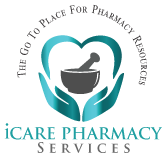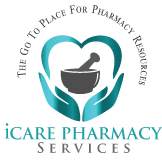Saturday, January 25, 2025
Scratching the Surface: A Review of Pain Pathophysiology and
Pharmacology
8:00-9:30am C/G/T
Satya Yaramati, PharmD, PGY2 Pain & Palliative Care Pharmacy Resident, UF Health Jacksonville
Upon completion of this activity, pharmacists will be able to: Describe
the pathophysiology of nociceptive, neuropathic, and central pain;
Collect a detailed pain history and appropriately assess a patient’s pain;
Summarize the indications, mechanism of action, dosing, side effects and
clinical pearls for various agents used to treat pain; Identify opportunities
for intervention regarding pharmacologic pain management therapy.
UAN: 0675-0000-25-001-L08-P
Upon completion of this activity, technicians will be able to:
Describe the various types of pain; Summarize the indications
and side effect profile of different pain agents; Recognize
opportunities for intervention regarding pain management therapy.
UAN: 0675-0000-25-001-L08-T
Recognizing the Danger Zone: Strategies and Considerations in Adjusting Pain Management Treatment Regimens in Chronic Pain Management
9:30-11:00am C/G/T
Robin Moorman Li, PharmD, BCACP, NBC-HWC, Assistant Director Jacksonville Campus, Clinical Associate Professor, University of Florida,
College of Pharmacy
Upon completion of this activity, pharmacists will be able to: Outline
common steps to create a comprehensive pain management plan; Describe
reasons why commonly used analgesic regimens must be adjusted due to
patient related and agent related variables; Recommend adjustments to
pain management treatment regimens in organ dysfunction; Demonstrate a
stepwise approach for opioid conversions; List important patient education
points on opioid conversions and proper use of breakthrough pain
medications.
UAN: 0675-0000-25-002-L08-P*
Upon completion of this activity, technicians will be able to: Recognize a
comprehensive pain management plan; Identify reasons why commonly used
analgesic regimens must be adjusted due to patient related and agent related
variables; Calculate dose conversions of certain opioids; List important patient
education points on opioid conversions.
UAN: 675-0000-25-002-L08-T*
A Novel Approach: Preventing & Treating Chronic Pain Due to
Obesity in the Healthcare Setting
11:15-12:45pm C/G/T
Matthew Hermenau, PharmD, CPT, NBC-HWC, Inpatient Pain Stewardship
Clinical Pharmacist, Jackson Memorial Hospital
Upon completion of this activity, pharmacists will be able to: Explain the
rising correlation between degenerative joint disease, obesity, and chronic
pain in the United States; Compare the current pitfalls of the healthcare model
for chronic pain due to obesity, and introduce a new hybrid model of inpatient
and outpatient management; Identify non-pharmacologic ways to combat the
obesity crisis and subsequent chronic pain
UAN: 0675-0000-25-003-L08-P
Upon completion of this activity, technicians will be able to: Explain the
correlation between degenerative joint disease, obesity, and chronic pain in
the United States; Compare the current pitfalls of the healthcare model for
chronic pain due to obesity; Recognize non-pharmacologic ways to combat the
obesity crisis and subsequent chronic pain.
UAN: 0675-0000-25-003-L08-T
Managing Pain in Multiple Sclerosis
12:45-2:15pm C/G/T
Lillian Smith, PharmD, MDA, CPh Associate Professor of Pharmacy Practice,
FAMU College of Pharmacy
Upon completion of this activity, pharmacists will be able to: Define
Multiple Sclerosis (MS) and its current impact within the United States;
Provide an overview of the risk factors and pathophysiology associated with
MS; Identify the potential genetic, environmental, and infectious factors that
may causes the disease state; Distinguish between the primary, secondary,
and tertiary symptoms caused by multiple sclerosis; Discuss the criterion and
physical assessment involved in concluding the diagnosis of MS; Categorize
the four types of multiple sclerosis while understanding the differences
and similarities between them; Outline both non-pharmacological and
pharmacological interventions currently available for the treatment of the
disease; Illustrate health disparities and barriers to care MS patients currently
experience in maintaining the condition; Describe the role of all involved in the
management of MS while outlining potential resources utilized for additional
support.
0675-0000-25-004-L01-P*
Upon completion of this activity, technicians will be able to: Define
Multiple Sclerosis (MS); Provide an overview of the risk factors and symptoms
associated with MS; Compare and contrast between the primary, secondary,
and tertiary symptoms caused by multiple sclerosis; Categorize the four types
of multiple sclerosis; Outline both non-pharmacological and pharmacological
interventions currently available for the treatment of the disease.
UAN: 675-0000-25-004-L01-T*



No Comments